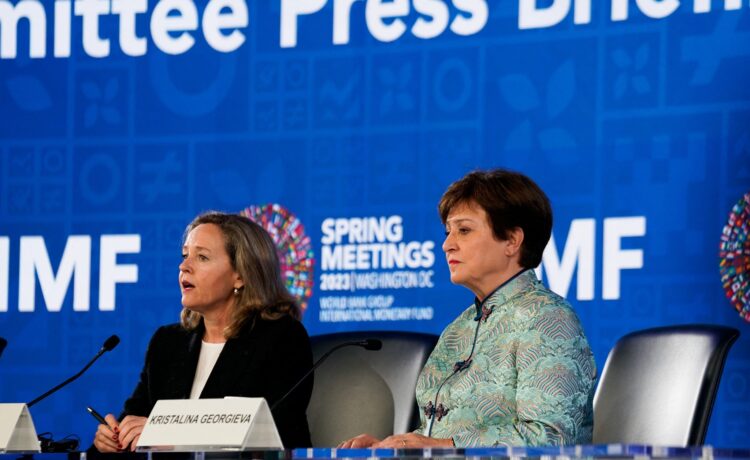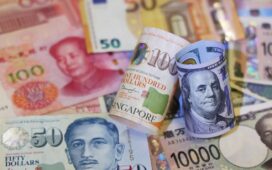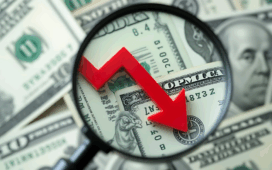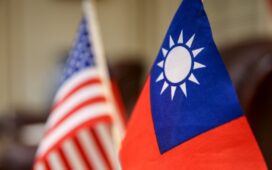The dollar is Russia’s problem because of US financial sanctions. The dollar is China’s problem because, no matter what their chances are in a fighting war, they have no chance in any financial war. The dollar is a problem for developing countries because a strengthening greenback chokes off their access to international capital and, with dynamic international capital flows, the US Federal Reserve’s dominance of global monetary policy complicates their fiscal and financial policy management.
The dollar is clearly Brazil’s problem too, given the President’s recent calls to cut the dollar out of international trade invoicing.
The dollar isn’t winning any popularity contests at the moment. And the more headaches the US dollar causes, the more countries will struggle to seek alternatives.
So far, those alternatives aren’t realistic. The options don’t look very attractive. Despite China’s large economy and primacy in global trade, holding international reserves in its currency, the renminbi, appears even riskier.
The only country that unequivocally likes a dominant dollar is the United States. As the currency of choice for international trade, it accounts for more than four-fifths of trade finance, half of trade invoices and dominates foreign exchange and debt markets.
About 59 per cent of the world’s official foreign exchange reserves are held in US dollars, the lowest level in 25 years. All this drives high demand for dollars, which is why it suits the United States very nicely. A dominant dollar gives US households, firms and governments the ability to borrow almost with impunity.
The dollar’s best friend is the lack of viable alternatives. But how long will this regime last?
One alternative often touted is an expanded role for the International Monetary Fund’s ‘Special Drawing Rights’ (SDRs). This is the reserve asset issued by the IMF which derives its value from US dollars, the euro, the renminbi, sterling and the yen.
Using SDRs as international currency might seem like a good idea, but it is still unlikely. The IMF is effectively controlled by the United States, the only country which has veto power over its decisions. There may be somewhat more constraint upon the United States’ exercise of financial power if SDRs had more prominence in the global financial system, but not much. The United States is very unlikely to allow an institution under its control to usurp the so-called ‘exorbitant privilege’ it gets from ‘printing money’ and issuing the global reserve currency.
The second option commonly put forward is an alternative currency. The euro and the renminbi are the most common candidates, but both those options are deeply flawed. Neither currency holds a bar to the US dollar in terms of depth, liquidity or convertibility, particularly the renminbi which, despite progress, is too tightly controlled by authorities and subject to their political whims to be an alternative to the dollar.
Digital currencies, like central bank digital currencies and stable coins, are perhaps a more likely competitor to the dollar. Barry Eichengreen suggests that either geopolitics or technology will eventually reshape the global monetary order. China and other countries are moving quickly in this direction, but digital currencies still require a level of depth, liquidity and convertibility that is many years away. And the United States is also making slow progress to digitise the dollar.
This leaves another potential option — a so-called Asian Monetary Fund (AMF) — recently touted by the Prime Minister of Malaysia to reduce reliance on the dollar and the International Monetary Fund.
Asian economies aren’t fans of the US dollar. ASEAN Finance Ministers and Central Bank Governors have been discussing efforts to reduce dependence on the US dollar and move to settlements in local currencies.
The only thing more unpopular than the dollar in Asia is the IMF. The IMF’s botched response to the Asian financial crisis means many Asian policymakers would prefer to go to the wall than go to Washington. The Asian Monetary Fund is an effort to create a regional self-insurance scheme that seeks to mediate the risk of unilateral sanctioning for geopolitical reasons.
In this week’s lead article, Andrew Sheng explores the history of the idea behind the Asian Monetary Fund and the pressures that are making it more attractive today after Malaysia’s Prime Minister, Anwar Ibrahim, recently resurrected the concept.
The AMF was first floated by the Japanese government during the Asian financial crisis in 1997 at the G7-IMF Meeting. Although it was supported by ASEAN countries, it was rejected at the Hong Kong IMF and World Bank meetings in September that year by China, South Korea, Europe and the United States.
‘The technical objections were on the grounds of duplication or dilution of the IMF’s central role and the creation of moral hazard’, writes Sheng, ‘but the real reason was geopolitical. As long as the IMF and World Bank majority shareholders — the United States and Europe — were not involved in the AMF, and China remained sceptical, the idea would not fly’.
Sheng outlines how the geopolitical landscape has changed since the Asian financial crisis, including the pressures on countries to find alternatives to the IMF and the US dollar. These range from the weaponisation of the dollar through sanctions and the exclusion of developing countries from bilateral swap lines, through the failures of Silicon Valley Bank and Credit Suisse and the painful memories of the global financial crisis. ‘If the United States doubles down on dollar weaponisation,’ warns Sheng, ‘then AMF 2.0 or look-alikes will become countervailing steps that push for de-dollarisation’.
An Asian Monetary Fund would allow Asian economies to pool regional currencies which they could then draw upon in a crisis. It would help them shift away from the IMF and, in doing so, move away from the dollar, too.
The biggest problem with the AMF idea is that a similar institution already exists — the Chiang Mai Initiative Multilateralization (CMIM) — which, despite numerous crises in Asia since it was initiated in May 2000, has never been accessed or used to resolve a crisis.
For an Asian Monetary Fund to be effective, it would need to learn from the mistakes of the Chiang Mai Initiative Multilateralization. It would need a predictable, transparent and non-political process within a trusted institution through which countries can access resources in times of crisis.
None of these barriers are permanently insurmountable. And the more headaches that are caused by the US dollar and the IMF, the stronger the incentives become for countries to start imagining and building alternatives.
If the United States wants to prevent this, it will need to cooperate. This means improving developing countries’ access to US dollars through currency swap lines and allowing developing countries to have a greater say at the IMF, while expanding and simplifying processes of accessing IMF resources in times of need. The upcoming 16th General Review of Quotas, which functionally redistributes IMF influence among members, will be the next major indicator of whether the Washington-based institutions can reflect an agenda relevant to emerging Asia.
Is the US Congress capable of that international compromise? That appears unlikely at this time but as pressures grow on both sides, that may change.
The EAF Editorial Board is located in the Crawford School of Public Policy, College of Asia and the Pacific, The Australian National University.




